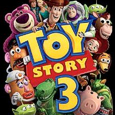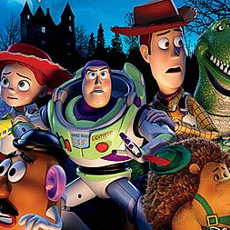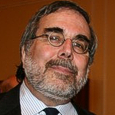Walt Disney Pictures (1995), Walt Disney Home Entertainment (March 23 2010), Blu-ray plus DVD, 81 mins plus supplements, 1080p high definition 1.78:1 widescreen, DTS-HD Master Audio 5.1 ES, Rated G, Retail: $39.99
Disney/Pixar (1999), Walt Disney Home Entertainment (March 23 2010), Blu-ray plus DVD, 92 mins plus supplements, 1080p high definition 1.78:1 widescreen, DTS-HD Master Audio 5.1 ES, Rated G, Retail: $39.99
Toy Story and Toy Story 2 each sold separately.
Storyboard:
In the bedroom, where toys naturally come to life when us humans are not around, young boy Andy’s favorite toy, Woody the Cowboy, has to contend with the arrival of all-bleeping, all-lighting spaceman action figure Buzz Lightyear. In the sequel, Woody’s real value is discovered by a devious toy collector, who takes Woody without permission, leading Buzz and Andy’s other toys to leap into action and venture out into the world to save their friend!
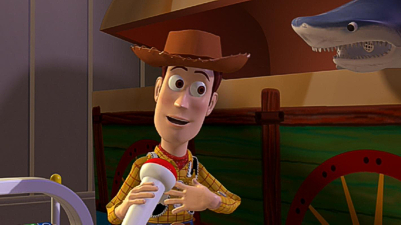
The Sweatbox Review:
There are no two ways about it: on its release in 1995, Toy Story was a groundbreaking film that influenced the industry to such an extent that it changed the shape of movies. Without it, animation would never have made the giant leap to CGI fare that dominates the marketplace nowadays, and, for good or bad, just as another pioneering animated film, Snow White And The Seven Dwarfs, set the template for animated features from the 1930s onwards, Toy Story laid the foundations for animation – particularly of the computer generated kind – to lean towards family orientated, smart-aleck comedies. And, just as Snow White had been a huge gamble for Walt Disney, the creators of Toy Story, lead by director John Lasseter, didn’t know if what they had would be a hit or a miss.

Of course, the film turned out to be a huge hit – one of the biggest of its year – and, like The Lion King before it, got the Hollywood studios all interested in starting up or acquiring partnership deals with companies that would be able to take a stab at competing with the new kid on the block: Pixar Animation Studios. Founded by George Lucas as a division of his Industrial Light & Magic visual effects facility, the combination of a quick sale necessitated by his impending divorce and the interest of one Steve Jobs in the power of the computers being used to generate ILM’s images produced a lightning spark that had Jobs buy the division from Lucas, as well as bringing in disillusioned Disney animator Lasseter into the new company, named Pixar as an amalgamation of pixels and art.
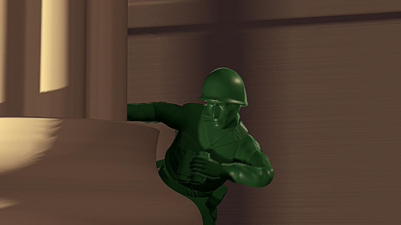
The company quickly made an impression with its simple but effective computer generated imagery, later coined as CGI, landing an Oscar nomination for their first film, Luxo Jr (the source of their hopping lamp logo), and a win for the later Tin Toy, which served as the genesis of Pixar’s move into feature animation when Disney came calling to see if they would be interested in a collaboration. The Disney of the early 1990s was on a roll: The Little Mermaid, Beauty And The Beast and Aladdin had made animation cool again, and The Nightmare Before Christmas showed the Studio was also interested in pushing boundaries. Pixar already had an association – many of the CG backgrounds in the traditionally animated films and the Studio’s CAPS process had been collaborative efforts – but the leap to a feature length film was a risky proposition that Pixar initially avoided.

Lasseter knew the company would have to grow creatively, but just as Walt Disney faced challenges and criticisms during the making of Snow White, many of the same questions were asked of a CG feature. Would audiences sit for an hour and a half of this new style of animation? Would they be able to relate to characters that were not traditionally animated but not photoreal either? Would they be able to withstand the super sharp, super smooth surfaces and hyper real coloring? Of course, the answers to these questions didn’t matter: Lasseter and his young Pixar team knew that the success of the film lay in the two important factors that had been imprinted on their DNA at Disney’s…story and character. It may have taken a while to nail the now-trademark Pixar touch in these regards (the film was initially a road movie but, after a disastrous screening for the Mouse House brass, who were putting up the financing, it became more focused on the interplay between Woody and Buzz, which has since become a Pixar staple), but the results were never in doubt.

From the opening frames (which on this release have been unfortunately toyed with – see the video comments below), Toy Story was going gangbusters to present something new to audiences, from the newly three-dimensional Disney castle logo and, in particular, the different approach to the song sequences: instead of breaking into song, the characters’ inner monologue is represented through the music of Randy Newman, Lasseter’s favorite singer-songwriter, responsible for some of the most noteworthy scores of recent times. He brings his now recognizable mid-western Americana feel to the music and, especially the songs, which break tradition in the way that others would follow in other Disney films. Some of Newman’s music may sound self-referential at times; in particular the opening You’ve Got A Friend In Me, a paean to relationships that takes on multiple symbolism over the two films, is a little too close to I Love To See You Smile from Parenthood, the two songs’ arrangements being almost interchangeable.
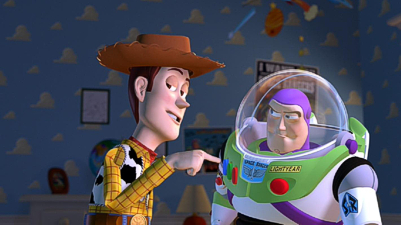
But that’s a minor gripe, and the rest of the time Newman perfectly captures the mix between Woody’s America and Buzz’s whimsical action ambitions, with a heartbreaking song, I Will Go Sailing No More, that is incredibly bettered by the emotional resonance of When She Loved Me in the second film. This new approach is also matched by the characters and plot: fairly simple and perhaps relying a little too much on its characters in retrospect but hitting home all the same. Somehow, the characters come through with a little more rounded personality than might have been the case in animated fare before, though chiefly this is the result of a little “cheat”: the hiring of instantly recognizable personalities that help to provide more context to their roles.
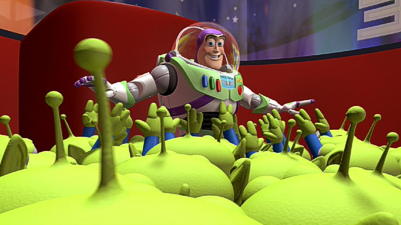
Big name casting has never been something animation has shied away from; even Disney back in the 1930s provided an alternate outlet for the hugely popular radio personalities of the day. Star names had also been sought for roles over the years by other studios, but it wasn’t really until Robin Williams stepped into Aladdin’s lamp to provide the voice of the magic, manic Genie in Disney’s 1992 film that bona fide superstars began to be considered for such parts. In some way, this was because animation had been seen as a niche market, but the huge critical success and grosses for Beauty And The Beast and Aladdin, not to mention the ongoing residuals from burgeoning home video releases, made voiceovers for animation a much more attractive offer: actors could come in for a few weeks to run off the lines without make-up or costume, and be rewarded for years to come.
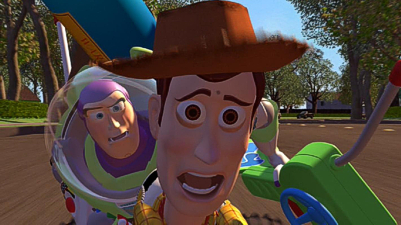
Although this led to a series of high-profile “stunt castings”, Toy Story ran with the idea, producing a test sequence of a prototype Woody to enlist the services of Tom Hanks, the then-Oscar winning star of Philadelphia and soon to be another winner for Forrest Gump. Hanks was sold, and the film picked up traction, bringing on board the lead of Disney’s own smash hit comedy show Home Improvement, Tim Allen, the personable know-it-all who then launched a successful big screen career of his own in such films as Galaxy Quest and the Mouse House’s Santa Clause series. Hanks and Allen bring their self-assured good natures to Woody and Buzz, providing them with an instant likeability that, it has to be said, accounts for a huge amount of the audience’s goodwill towards the knockabout characters and comedy.
Coupled with the still immensely impressive visuals, it all ads up to a highly entertaining groundbreaker; indeed, if there’s one important animated film of the past 20 years that can rightfully be labeled a true classic, it’s Toy Story, a film that, to repeat its most celebrated line, soars “to infinity…and beyond!”
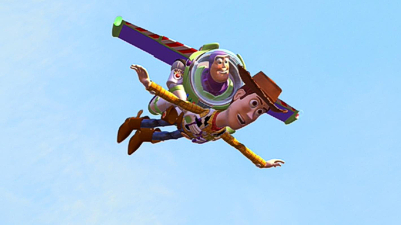
Less than five years later, the Pixar team were able to do it all over again – and actually better! – for the inevitable Toy Story 2. Ironically, the film went through the same tortuous story process as the first film, being intended originally for Disney’s popular direct-to-video pipeline that sequelized the Studio’s most successful films. Toy Story had proven to be an enormous success, and Disney – still the dominant partner in their partnership with Pixar – quickly cashed in with a series of spin-offs, including a packaging of previous Pixar shorts with Toy Story character interstitials released as Tiny Toy Stories, a Buzz Lightyear Of Star Command video feature and subsequent TV show…and the order for a cheaply produced, quickly run off video sequel film.
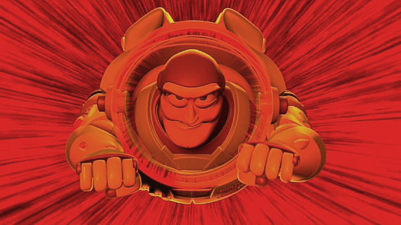
It was part-way through the development of the project, when original director Lasseter viewed what the team had assembled in rough form, that production was halted and the storyboards reworked to pitch the film back to Disney as a theatrical film. Proving their commitment to the project, Pixar would invest, as they had done with the film released between these two films, A Bug’s Life, half of the financing, taking equal screen credit with Disney, and half of the proceeds. This was a move that would later cause the friction between the two companies, when Disney refused to accept Toy Story 2 “counted” as a theatrical film in their multi-picture deal with Pixar, though all was of course eventually solved and the two, now merged, are due to get behind the all-new third Toy Story adventure this summer.
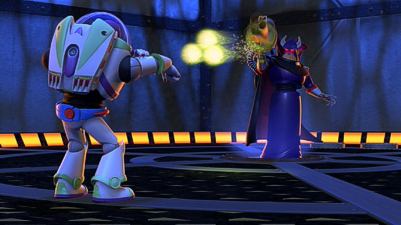
They’re going to have to be going out with all guns and lasers blazing and blasting, since it’s honestly hard to see how the eventual result of Toy Story 2 could ever be bettered. In animation terms, sequels didn’t used to come along everyday, and that the film, after its troubled stop-start production, quickly became known as The Godfather Part II or The Empire Strikes Back of animated films is pure and simply down to the writers being freed of the DTV pitfalls and able to run with their wildest ideas. CG innovation was being expounded upon with each new short film or feature, and Pixar was able to let their characters out of the bedroom and into the wider world.
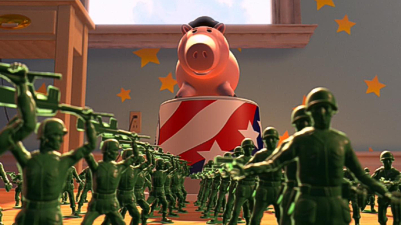
And this time everybody naturally wanted to be a part of it, including toy makers Mattel, who had declined to let their own star, Barbie, in on the fun of the first film, though were all too happy to feature her prominently this time around. Actually, The Empire Strikes Back is a good title to invoke in talking about Toy Story 2: just like Lucas’ continuation of his space saga, this film does nothing but build on everything the first film did so well. It recognizes the audiences’ love of Buzz Lightyear, but its affection for Woody the Cowboy, and slots in multiple moments for both to shine (but never outshine each other) as well as introducing new characters, including one that complements both heroes perfectly and provides both the emotional heartbeat of the film and an enthusiastic female that girls can connect with.
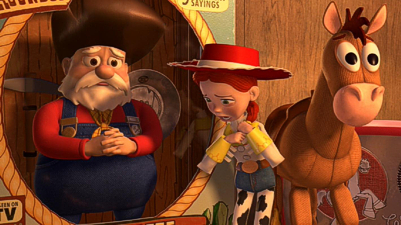
From the barnstorming outer space adventure opening, in which we find Buzz on a sci-fi reference-heavy encounter against the evil scourge of the universe, Emperor Zurg (later used in another, intentionally obvious, reference to Empire) to the gut-wrenching revelation of Jessie’s past and the final, jaw-dropping chase through an airport, Toy Story 2 is, basically, Toy Story-plussed. Even though it’s a good ten minutes longer than the first film, it’s full of economic storytelling and, again, some wonderful characterizations. All the major players are back to voice them, including Hanks and Allen who, on the posters that proclaimed “the toys are back in town”, got actual above the title billing, a rarity in animation at the time, but yet another aspect of name casting that’s all-too overused now.

Though barely over ten years old, Toy Story 2 is also destined to become a classic animated film, and together with Toy Story 3 this summer, is sure to go down as one of film’s great trilogies. Pixar’s movies are always stunners, and there have been some true marvels since these two initial Toy Story movies appeared, but there’s something about working with these characters that brings out an extra level to their relationship with them. Despite what has come from the Studio since then, I wonder if Toy Story 2 still isn’t the most finely-tuned computer animated film yet to have been released? Like Star Wars, we know and love the original for being something so completely new and different, but this Toy Story equal of Empire takes that newness and gives us something different again.
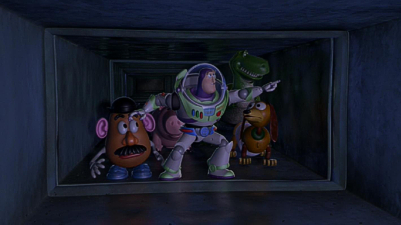
Perhaps it’s because these characters were the ones that built Pixar Animation Studios into what they are today that the story artists and animators relate to them so well. Like toys themselves, you never forget the first of favorites you had, or the love and care you gave them. The audiences for the Toy Story films is like that too: there’s an unspoken acknowledgment that these were the first of their kind, and they’re stories and characters we will repeatedly return to and will always have a soft spot for.

Is This Thing Loaded?
Being released on the high-definition Blu-ray format in time for the summer release of Toy Story 3 in theaters this year, one does have to ask the question of whether the “Special Edition” label on both Toy Story and Toy Story 2 is another cheap trick to get fans to pick up the films again (after VHS and LD releases, an Ultimate Toy Box triple DVD set, stand-alone DVDs, a double-feature collection and anniversary editions in the mid-2000s) before bringing out an eventual trilogy box at Christmas, or if the term is well deserved this time around. Well, that Ultimate Toy Box was a tough set to beat, and the anniversary editions missed out as much as they added. So what’s on offer here?

Both discs include their own exclusive new peeks at Toy Story 3, the first film’s disc concentrating on The Story, the second on The Characters. Each of these highly promotional featurettes are here purely to build the hype factor, of course, and as well as probably turning up online nearer the new film’s release, they’re full of snippets we’ve seen in the trailers and the first is brief at only a couple of minutes. The film’s trailer is also included in a series of Sneak Peeks along, as the disc starts or from their own menu, Beauty And The Beast: Platinum Edition, The Princess And The Frog, James And The Giant Peach and various other generic Disney promo spots.

The rest of the Toy Story disc promises a selection of “all-new” bonus features, and although they do draw on material previously seen, there’s still enough to entice those with the old supplements, most of which HAVE been retained in full as well, meaning that this is as comprehensive a collection of Toy Story mania as one could hope for. Of the all-new Bonus Features, much of it is brief and fluffy, beginning with Buzz Lightyear Mission Logs: Blast Off, a 3:27 minute look at a NASA space station launch that has a film link via the Lightyear figure seen floating through various shots.
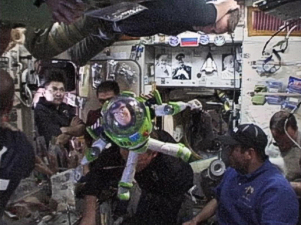
Of more interest, though still loose in Toy Story film terms, Paths to Pixar: Artists (4:49) introduces us to a number of Pixar veterans and the personal journeys they took before landing their roles at the Studio. A handful of Studio Stories are next, continuing the Pixar family theme, and John Lasseter’s Car (1:27) recounts the “humble death-box” car the director of Toy Story drove at the time of the film’s making. Studio Stories: Baby AJ (1:39) tells very amusingly of AJ Riebi’s lengths he went to in order to win the Studio’s Halloween costume contest, and Studio Stories: Scooter Races (2:16) elaborates on the famous Pixar culture of the artists zooming around the offices at speed, and the attempts to make it around the Studio in record time.
Buzz Takes Manhattan (2:13) is a retrospective moment from Lasseter as he expresses his pure joy at having a Lightyear balloon in last year’s annual Macy’s Thanksgiving Parade in New York City. With location footage from the parade, and Lasseter’s clear enthusiasm in check both as a parade walker and in talking head mode, it’s hard to resist this spot of spectacle.

The last and most substantial of the new extras is Black Friday: The Toy Story You Never Saw, a 7:34 look back at the original version of the film as it was guided by the Disney executives of the 1990s. It’s not so frank as to upset those involved with the production, but there is an interesting emphasis on how the notes that the Pixar team received didn’t really do the film justice, and how things didn’t really fall into place until Lasseter and his senior team pulled the story back from the brink and worked overtime to present Disney with a plot and characters that worked. A slice of the reel that led to the Black Friday screening is then shown, although those with the original LaserDisc pressings may get a feeling déjà vu.
After this, many of the other LD and previous DVD supplements have been carried over, including the 1996 Audio Commentary featuring director Lasseter and his creative team. If you’ve owned any previous version of Toy Story on LD or DVD before, you’ll know what a great track this is – and it includes Randy Newman’s now cut intro music underneath the participants’ introductions. The rest of the material is all stuff fans may have seen before, here collected under the Classic DVD Bonus Features banner. It’s an impressive list of supplements, which for those without the Ultimate Toy Box or 10th Anniversary Edition will include a lot of “new” stuff, such as the 16-minute Filmmakers Reflect featurette from 2004, with Lasseter, Andrew Stanton, Pete Docter and the much-missed Joe Ranft remembering various production anecdotes.

Although these features have all been ported over in their original standard definition-only format, that does mean there’s a lot of space to include as much as possible, and the list is almost endless, from Making Toy Story (20:17) and The Legacy Of Toy Story (11:41), to Designing Toy Story (6:12) and almost 20 minutes of Deleted Scenes. Featuring eight sequences in various states of production, there are alternate openings (including one “Buzz Lightyear Show” that clearly influenced the start of the second film) and different takes on moments that ended up on screen, with selected introductions by editor Lee Unkrich. The Design section pulls in the wonderful still frame galleries from the LaserDisc set and presents them as a video slideshow accompanied by Newman’s music, covering everything from character concepts, 3D visualization turnarounds, and Color Script explanations and examples. All told, there’s almost another half hour to explore here alone.
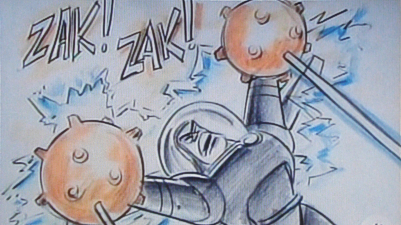
In Story, we get to see the pitch for the Green Army Men scene, Andy’s New Toy storyreel, and The Chase storyboard to film comparison, adding up to almost 14 minutes in total. There’s another 14 minutes to be found in Production, including a (out of sync) look at the stages of animation, layout tricks, and the sometimes hysterical Toy Story Around The World multi-language reel. In Music & Sound you’ll find Newman’s You’ve Got A Friend In Me music video featuring Lyle Lovett (2:15), a discussion on Designing Sound with Skywalker supreme Gary Rydstrom (6:35), and a complete set of Randy Newman’s Song Demos, a terrific 17:30 compilation of alternate, deleted and final songs, including both versions of Plastic Spaceman and its eventual transition to the quite wonderfully melancholic I Will Go Sailing No More, and an improvised You’ve Got A Friend In Me instrumental.

Finally, as if all that wasn’t enough, the bursting Publicity section holds over ten minutes of promotional material, including a Character Interview with Woody and Buzz by John Culhane, two Theatrical Trailers, four TV Spots, two one-minute video galleries of movie posters and the real-life merchandising inspired by the characters. The section ends with no less than 15 Toy Story Treats, each running between a few seconds and a couple of minutes depending on their content. Included are what amount to tiny toy stories that played as television bumpers, though there are some funny little gags to be found amongst, it has to be said, quite a bit of just average business, though the second – and this disc – ends with the ludicrously bang on target Buzz Lightyear Commercial in a fullframe version.
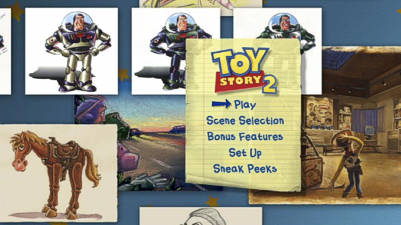
The Toy Story 2 disc naturally begins with the same selection of previews and it’s own Toy Story 3 sneak peek, this time a little more in-depth at four minutes. Of the other new features, we’ve another NASA-endorsed spot, Buzz Lightyear Mission Logs: International Space Station (3:43), which looks at the space station in action and what makes it tick; all interesting, but tenuously linked to the movie and with far less Buzz action figures floating through shot. We meet more of the Studio’s personnel in the Paths to Pixar: Technical Artists (4:24) featurette, including co-founder Bill Reeves, and there are three more Studio Stories. Toy Story 2 Sleep Deprivation Lab (1:25) looks at the incredible job the crew did in pulling together the movie in seven to eight months after the first version was rejected, leading to long working hours and a vast lack of shuteye!

Studio Stories: Pinocchio (2:15) offers up a very twisted take on life at Pixar before the move to their custom-built facility in Emeryville, and if the tight schedule wasn’t enough to contend with, Studio Stories: The Movie Vanishes (2:32) reveals the hysteria that broke out when the equivalent of the “delete button” was pressed on the Toy Story 2 files and various elements began to disappear, literally wiping out all the work that had been done on the movie! The basics of animation are explained in Pixar’s Zoetrope (1:58), before going on to display one of the most elaborate and truly impressive examples of this early animation device in action. An extremely touching tribute is paid to an animation great in Celebrating Our Friend Joe Ranft (12:46), the brilliant storyman who was taken far too soon in an automobile accident. Ranft contributed to the re-emergence of Disney animation in the 1980s and ’90s before adding so much to Pixar’s early films, and here his colleagues’ memories are mixed in with Ranft’s own takes on his craft.
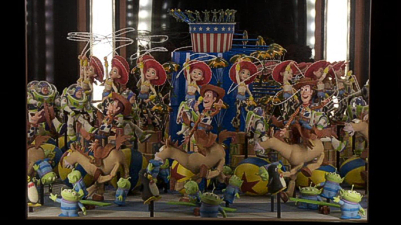
Toy Story 2 came along right at the beginning of the DVD boom, and so a deluxe LaserDisc edition was never released, but the original Ultimate Toy Box and later DVD edition made up for that with a host of supplements that covered the movie’s production, pretty much all of which have been carried over to make up the Classic DVD Bonus Features from the 2000 and 2005 releases. First up is another gathering of director Lasseter and co-director Unkrich and their team for an extremely solid Audio Commentary that really delves into the production and offers up a heap of information that doesn’t get repeated elsewhere. Although short at eight minutes, Making Toy Story 2 does a good job of expressing how the filmmakers wanted to respect the work that had been done on the first film while acknowledging the need to expand upon the concept, although unlike the exposition of the rejected version of the first movie, there’s unfortunately nothing on the direct-to-video roots of this sequel.
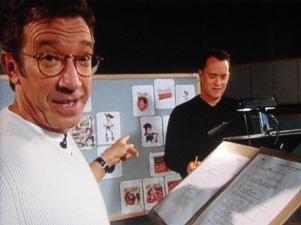
A John Lasseter Profile (3:02) is less about the films’ director and more a puff piece about the Disney/Pixar relationship and the cast and crew gushing about what a great job John does. Cast Of Characters (3:28) is pretty much more of the same, this time focusing on the voices behind the animated personalities. In the Toy Box, there’s a bunch of fun stuff, from the fullframe look at the film’s end credit Outtakes (5:27) and the hysterical Jessie’s Gag (:60) animator’s joke, to a light discussion on Who’s The Coolest Toy? (3:19), a bouncy Riders In The Sky Music Medley (3:11, on the stage of Disneyland’s Golden Horseshoe Review), and a video gallery of Autographed Pictures of the characters that runs :45 seconds.
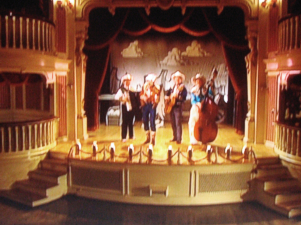
Deleted Scenes serves up a small helping of two sequences dropped from the film, though again at just four minutes including an intro there’s nothing near the amount featured for the first film, and a distinct lack of any acknowledgment of the DTV origins means we still don’t get any kind of insight into the initial version that got turned around during the production process. There’s a little bit of overlap between the first film in the Design section which, in its video galleries of character concepts (16:43) and 3D Visualizations (11:02), replays some of the development for the first film, though of course the new characters and locations get various turnarounds and flythroughs, and there’s a look at the Color Scripts (4:30) for the tone of scenes in the film.

Production highlights some of the elements lacking so far, including a look at the props created for Designing Woody’s Past, Making Woody’s Roundup marionette animation, and a Production Tour that again covers the stages of animation as produced by Pixar. Some Early Animation Tests, and the tricks used for the film’s Special Effects are revealed, and an International Scene shows how Buzz’s Stars and Stripes-backed motivational talk in the movie was rescored and appeared as a “One World Anthem” for release around the globe. All in all, this collection of clips plays for a total of 13:41.

There’s more alternate soundtrack elements in Music & Sound, a 14:08 collection of clips that include Gary Rydstrom speaking again about his work on this second film, a discussion of Randy Newman’s songs and another Woody’s Roundup music clip. An audio demo for Jessie’s Song (as it was initially titled) has Newman capturing the tear-jerking nature of When She Loved Me’s music and lyrics. Finally, in the selection of Publicity materials (8:32), there’s another Character Interview with Woody and Buzz, two Theatrical Trailers (including the hilarious Little Green Aliens teaser), four TV Spots, and a one-minute video gallery of movie posters. The section ends with a fun 19 second Baseball Woody clip that has the cowboy serving up a curve ball right into camera, bringing this disc to a close.

One could make the point that not every supplement from the LaserDisc, Ultimate Toy Boy, or 10th Anniversary editions have been ported over to Toy Story and Toy Story 2’s Blu-ray debuts, but there’s very little that’s been left out which isn’t to be found elsewhere (the originally included shorts Luxo Jr and Tin Toy, for example, are now grouped on a disc of Pixar Shorts of their own). Of course, real collectors will probably hold onto their LDs and Toy Boxes anyway, but there’s a ton of stuff here that should please everyone, even if it would have been neat if the compilers had gone the extra mile and converted what footage could have been recreated (the trailers, galleries, etc) in HD.
Both sets come loaded with their Special Edition standard definition DVD counterparts, which will be released as stand-alone discs on May 18, 2010, and include the new supplemental bonus features and audio commentaries only.
Case Study:
Since the menus and supplements on each disc somewhat mirror each other (like the films, they seem to have been produced with a continuation in mind), the packaging is likewise designed to work together as a set (blue for the first film, red for the second), our review covers both films as a collection. Even if each disc is sold separately, many stores such as Amazon online, are offering further savings when bought as a pair. The covers, then, are almost identical in basic design, with the front of the embossed shiny slipcover, cover and disc art split down the middle between the characters and the title treatments. Under the slip, the sleeve reproduces everything again, and inside the standard Blu-ray cases, there are various Movie Reward code inserts for Blu-ray, upcoming product and, in the Toy Story 2 case, a movie ticket voucher to see the third film.
Naturally, each case also holds the bundled-in DVD along with the BD, although despite both formats and the fact this is supposedly a full-featured combo pack, it’s nevertheless interesting to note that Disney isn’t entirely behind the Digital Copy offerings for some of their most notable films. Snow White missed the opportunity to include an expected combo pack DisneyFile disc, and now both Toy Stories forgo the extra disc, as if Disney were reluctant to give away too much of their crown jewels (or maybe just save them for Steve Jobs’ Apple iTunes exclusives?). No matter, these discs are no great loss, although hopefully the debut of Toy Story 3 towards the holidays will match these cover treatments.
Ink And Paint:
Recently given a digital reconstruction for its 3D theatrical reissue late last year, the original Toy Story appears on Blu-ray for the first time in an all-digital transfer. Given the recent nature of the clean-up (from the original digital files), the results are nothing short of spectacular and, just as expected, the image quality is essentially as good as a brand new computer generated film. My only gripe is that the original opening of the film has been nothing short of ruined to place the new Disney castle and Pixar logos on the front, totally scrapping Randy Newman’s intro music which, very obviously as heard underneath the 1996 LaserDisc audio commentary ported over here, could have accompanied the Pixar logo at least rather than coming in with a very amateurish cut.

Toy Story 2 doesn’t suffer nearly as much (the result of the Pixar logo always being there on the original release) and looks, dare I say it, even better, thanks not only to more elaborate design and production, but also due to the theatrical reissue (it doesn’t hurt that the film was also lauded for being the first to have been produced and directly delivered digitally on original release either) that now includes the end credit “outtakes” onscreen. Both films pop off the screen with a depth that many mistake for 3D anyway, and both make for contemporary classic demo material.
Scratch Tracks:
Also the benefit of some tweaking for their recent theatrical showings, both films’ soundtracks exhibit the kind of mixes that have come to be another of Pixar’s trademarks. Highly detailed, exceptionally well recorded and perfectly mixed, the Studio’s relationship with George Lucas continues today through the top-end tracks produced at Lucas’ Skywalker Sound, and although the THX badge of approval that adorned previous LD and DVD releases isn’t a requirement in the new Blu-ray world, you can be sure those levels are well reached here and actually surpassed. Bass separation is particularly impressive, especially in the rumbling road crossing scene in the second film, and the intricate movements of the toys have much more clarity even if they still (quite rightly) don’t call attention to themselves. Subs and Dolby Digital EX dubs are bundled in for French and Spanish languages.
Final Cut:
It could be well argued that these two BD debuts/DVD reissues are nothing more than an attempt to remind audiences about what we loved about the Toy Story characters so that we all rush out and see the third film this summer. But both discs – despite the really annoying chopping about to the opening of the first film – are so all-encompassing in their treatment that it would be hard to think of what could be added even if another release, joined by its three-quel, could be around the corner for the end of the year. Pixar have been quite cautious with their conversions to Blu-ray, choosing to go with a mix of new and old supplements that pretty much nail things on the head before moving on, so although it might be prudent to wonder if further editions could be on the horizon, the chances are just as sure that this is it for Toy Story on Blu-ray, at least for now. If you want to wait and see if these discs turn up with the third film in a new cardboard box, go ahead, but for now we’ve been given as nice a helping of new extras as could be hoped for, a fairly complete archive of “classic” extras, and the films presented more pristinely than ever before. Play nice!
 | ||
 |









